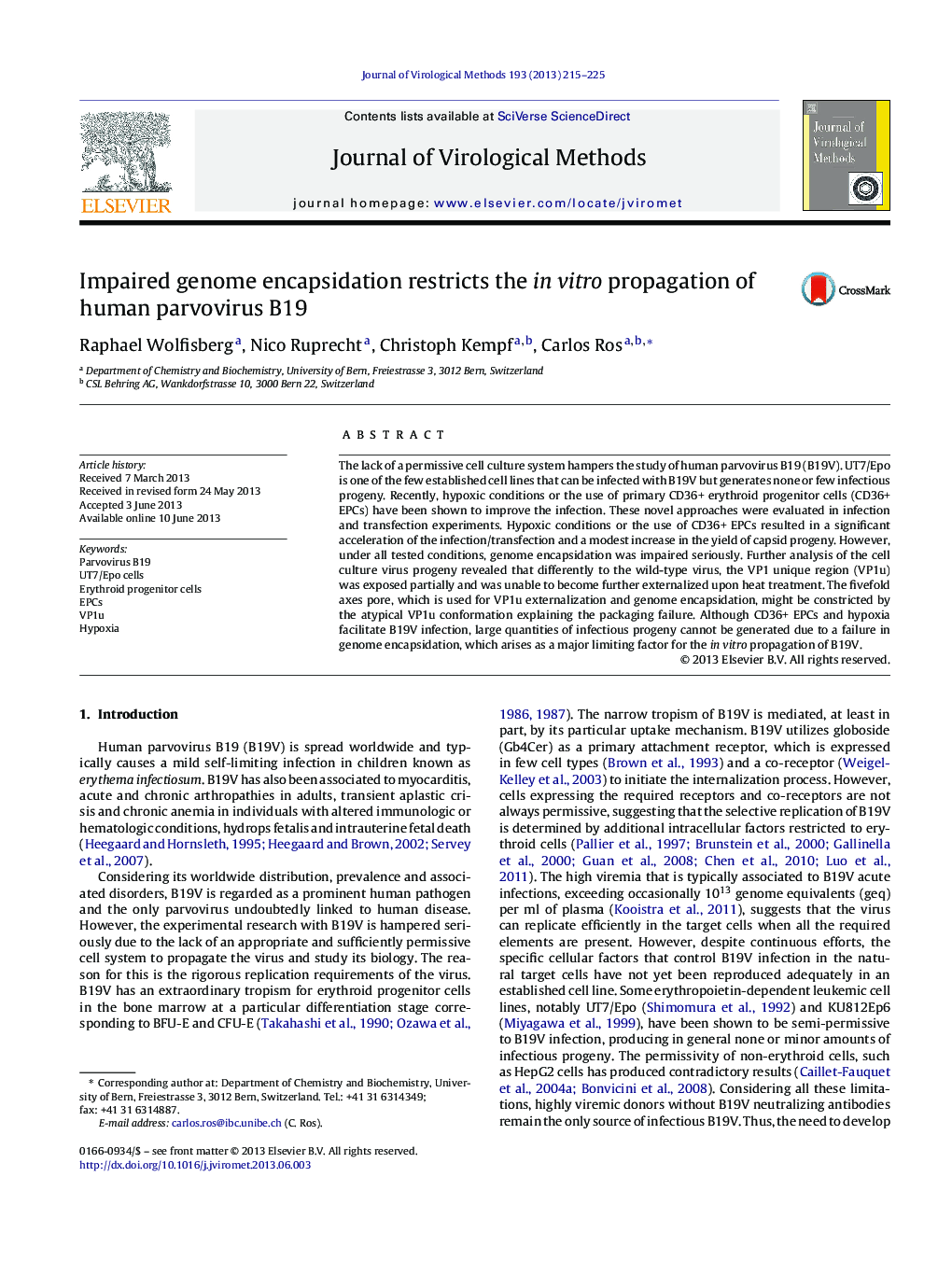| Article ID | Journal | Published Year | Pages | File Type |
|---|---|---|---|---|
| 6134331 | Journal of Virological Methods | 2013 | 11 Pages |
Abstract
The lack of a permissive cell culture system hampers the study of human parvovirus B19 (B19V). UT7/Epo is one of the few established cell lines that can be infected with B19V but generates none or few infectious progeny. Recently, hypoxic conditions or the use of primary CD36+ erythroid progenitor cells (CD36+ EPCs) have been shown to improve the infection. These novel approaches were evaluated in infection and transfection experiments. Hypoxic conditions or the use of CD36+ EPCs resulted in a significant acceleration of the infection/transfection and a modest increase in the yield of capsid progeny. However, under all tested conditions, genome encapsidation was impaired seriously. Further analysis of the cell culture virus progeny revealed that differently to the wild-type virus, the VP1 unique region (VP1u) was exposed partially and was unable to become further externalized upon heat treatment. The fivefold axes pore, which is used for VP1u externalization and genome encapsidation, might be constricted by the atypical VP1u conformation explaining the packaging failure. Although CD36+ EPCs and hypoxia facilitate B19V infection, large quantities of infectious progeny cannot be generated due to a failure in genome encapsidation, which arises as a major limiting factor for the in vitro propagation of B19V.
Related Topics
Life Sciences
Immunology and Microbiology
Virology
Authors
Raphael Wolfisberg, Nico Ruprecht, Christoph Kempf, Carlos Ros,
